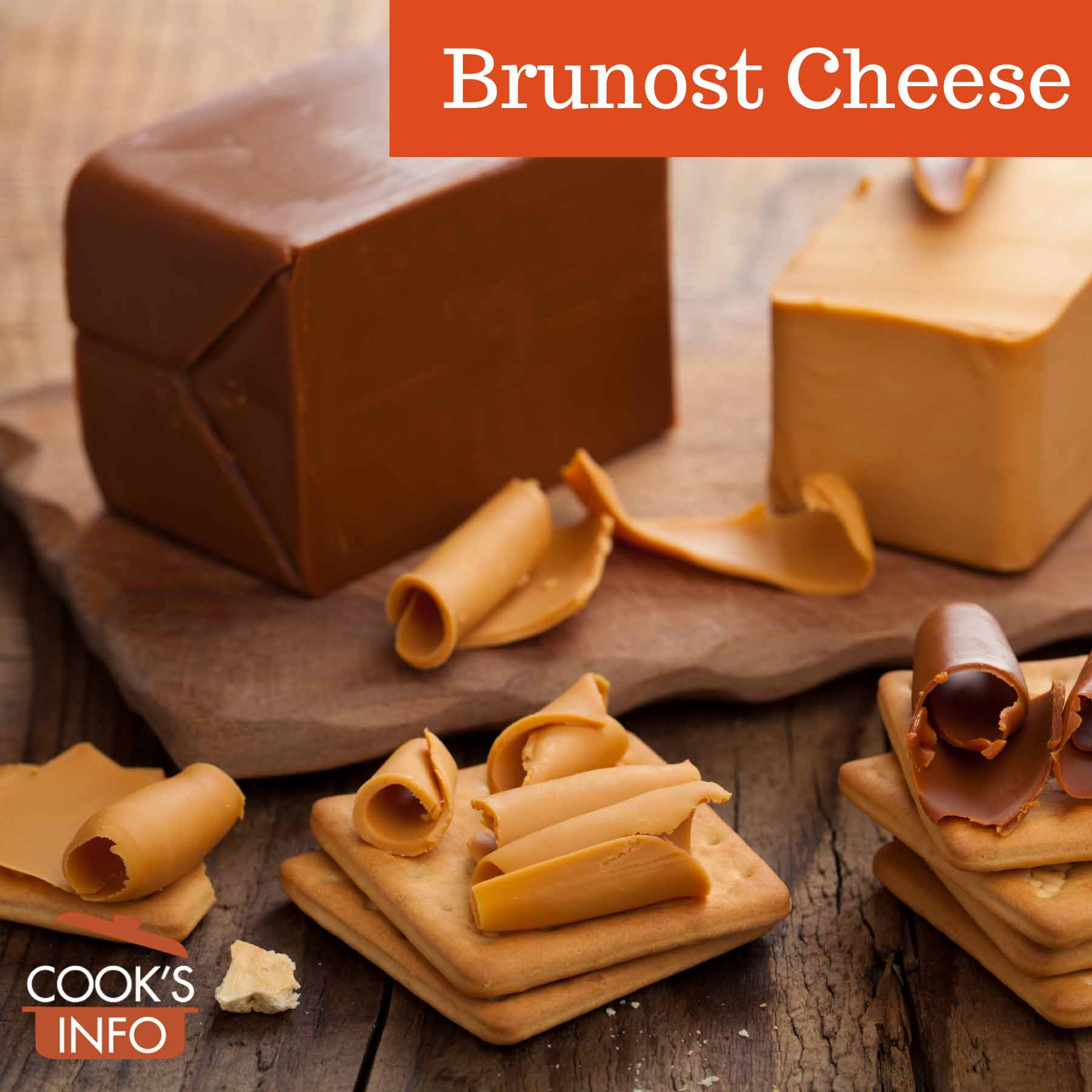
Brunost cheese. Olga Miltsova / Getty Images via Canva Pro.
Brunost (meaning “brown cheese”) is a smooth, semi-firm cheese that is buff-coloured, like the colour of brown envelopes, with a sweet and sour caramel taste.
Made in Norway, Brunost cheese is 25% of all the cheese eaten there.
It is made from whey, from both cow’s milk or goat’s milk. A mixed version of Brunost cheese made from both cow’s and goat’s milk whey has a milder taste and is more popular with children.
To make Brunost cheese, cream and milk are added to whey, and brought to a boil, then reduced to a simmer and stirred constantly for about 3 hours. The milk mixture thickens as water evaporates. While this happens, the lactose sugar in the milk caramelizes, and turns the whey slightly brown. Eventually the mixture becomes a light brown paste (literally).
It is then removed from the heat and stirred as it cools to keep it smooth and to prevent it from becoming granular (if you are attempting this at home, it needs to be whisked to stop the sugars from crystallizing.) Then it is poured into rectangular or round moulds, let set, then it is unmoulded.
It needs no aging; it is ready to sell as soon as it is unmoulded and packaged.
Brunost cheese can be eaten for breakfast, or with fruit cake. It slices very well.
Some people really dislike the taste and the texture.
Versions of brunost include:
- Ski Queen brand Gjetost: half cow’s milk, half goat’s milk. No rind;
- Ekte Gjetost (real Gjetost): made from goat’s whey, darker colour and richer flavour than Ski Queen brand Gjetost;
- Flotemysost: made from cow’s milk whey, enriched with cow’s milk cream;
- Gudbrandsdalsost : both cow’s and goat’s milk. 10 to 12 % goat’s milk. The most popular;
- Mysost: made from all cow’s milk whey. In Norwegian, “myse” means “whey” and “ost” means “cheese”;
- Prim: cow’s milk with sugar added. Boiled for less time than all other kinds.
Nutrition
Brunost Cheese has 30% fat content.
Per 1 oz (30 g) Ski-Queen Gjetost: Calories 130, Fat 9 g of which Saturated 6 g and Trans 0 g, Cholesterol 30 mg, Carbohydrate 11 g of which Fibre 0 g and Sugars 7 g, Protein 3 g
History Notes
Brunost cheese was traditionally made by boiling whey on its own. A woman named Anne Hov worked for a creamy in the Gudbrands valley in Norway. In the summer of 1863, she did an experiment of adding cream to whey before bringing the whey to a boil to create a fattier, more cheese-like product. Her improvement to the cheese caught on. Later, she tried the same thing with goat’s milk (goats being easier to rear in mountainous Norway.) In 1933, reputedly, at the age of 87, she received a medal (the “Kongens fortjenstmedalje”) from the King of Norway (who in 1933 who have been Haakon VII, a Danish prince) for her invention. If she were 87 in 1933, that would make her 17 when she came up with the idea in 1863.
Language Notes
“Brunost” means “brown cheese.”
Gjetost is pronounced “yet-oast”. It is actually called “geitost” now in Norway, but export packages still say gjetost. “Gjet” or “geit” in Norwegian means “goat”; “Ost” in Norwegian means “cheese”.
Brunost Cheese is sometimes also called Gudbrandsdalsost – Gudbrand is the name of a valley, “dal” meaning “valley”, and “ost” meaning “cheese.”
In some sources, her last name is given as “Haav”.
Advertisement for Brunost Cheese

